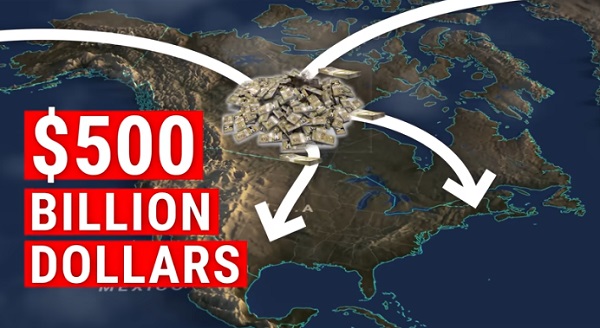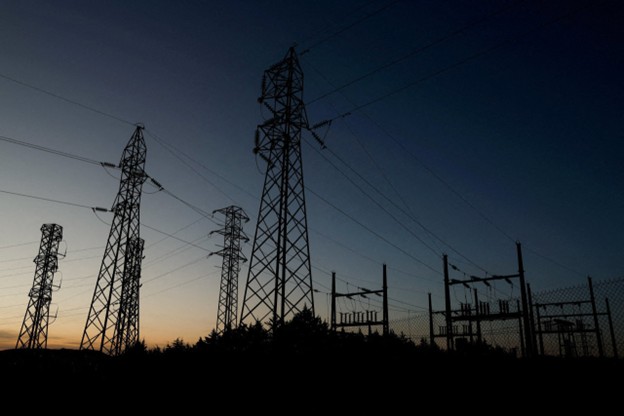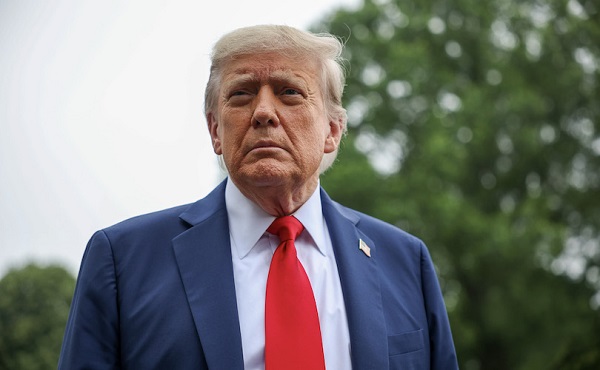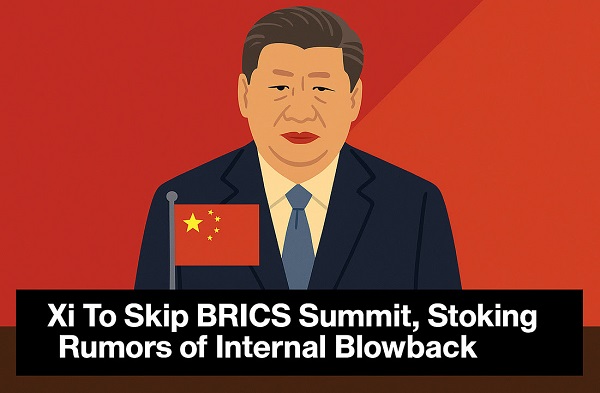Brownstone Institute
Sam Bankman-Fried and the Missing Billions for Pandemic Planning
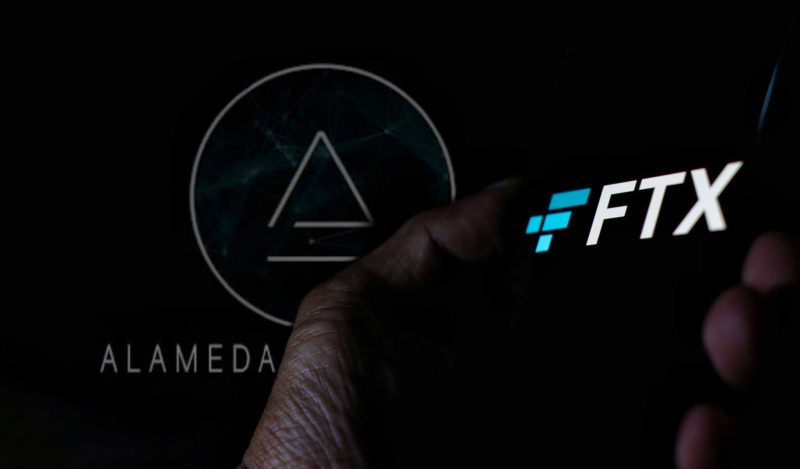
From the Brownstone Institute
BY
Yes, I watched the appalling scenes of Sam Bankman-Fried’s media tour. He repeatedly returns to the theme of his philanthropy: pandemic planning. What does this 30-year-old computer guy know about infectious disease? No more than Bill Gates did when he began his malanthropic crusade through the universities, journals, and nonprofits and imposed his lockdown-and-vaccinate ideology on them, thus compromising a whole generation of infectious-disease scientists.
Bankman-Fried saw how much influence this bought Gates and decided to replicate the experience in a mere few years in the midst of a pandemic. As we’ve documented, he gave millions but promised billions. The promise tends to be even more effective than money in the bank. All the better, he backed his “pandemic planning” support with $40 million (Elon Musk speculates it was far more) for politicians who shared his supposed passion to control infectious disease.
And so Sam of FTX, who seems to have stolen and otherwise misdirected billions from his own crypto scam, was invited to speak at a New York Timesevent called Dealbook. A seat in the audience cost $2,400. He had been booked for the gig long before because he was a darling of the left, having thrown around many millions to back Democrats in the midterms.
He was also loved for running the second-largest crypto exchange in the world while babbling left-wing prattle about effective altruism. He advertised himself as the world’s most generous billionaire at a mere 30 years old! He urged others to do the same, giving to his brother’s charity devoted to pandemic planning, just as an example.
With his disheveled look and halting speech patterns, he struck many as a genius. One would have to let go of all normal intuition to believe that, but here is where we are today.
The interview pitched a series of softball questions with the mask of a tough interrogation. Bankman-Fried replied with a bunch of financial-sounding mumbo jumbo that the interviewer could not really follow, so of course he gave him a pass. In the end, the interviewer and the audience gave the thief a round of applause for his frank answers and accessibility.
Sam claimed that his lawyers advised against this particular appearance. I don’t believe it. I suspect that his lawyers understand something very dark about our times. If you can bamboozle an audience at the New York Times, you stand a better chance of favorable treatment in a court of law. That’s why he is continuing his media rounds. Hey, why not a speaking tour to boot?
How did Bankman-Fried justify himself? Essentially he said that he had downplayed the downside risks in a possible bear market in which his tokens suddenly lost 90% of their value. He had not anticipated this. And, he seemed to imply, had the markets not changed direction, his company would be solvent. Hence, none of this is really his fault. It’s just what happens when the market winds change course.
By comparison, Bernie Madoff’s scam was rather simple. He used the money of new investors to pay a return to old investors. He gradually came to realize that he had better success in business by doing this than relying on market forces themselves. By offering a predictable 9 percent return, he could always attract new money in up markets or down markets. In a sense he was right: his Ponzi scheme lasted 20 years!
When the housing market crashed and the money dried up, and he could no longer find new chumps to pay the old chumps, he admitted it. He said he lied and that he was running a scam. He pled guilty, went to jail, and died. One son killed himself and the other died. His widow today lives a modest life, still reeling from the horribleness of it all.
Sam’s scheme was far more complicated. It involved mixing funds over a huge range of companies that he owned, so his own exchange had an open spigot of customer funds going to his own Alameda Research, which would use those funds to buy the token FTT in which customer funds were held. It was the same scam as Madoff but tokenized in a world that has stupidly come to believe that anyone can create a thing of value with a few mouse clicks and some incantations of the word blockchain.
Crucially, Bankman-Fried paid off all the right people along the way. He paid nonprofits, media companies, and politicians, and made all the right noises about the need to regulate the industry more than is currently the case. As a result, his media darling status persists even now, as the New York Times and MSNBC work hard daily to rehabilitate him, despite his not being able to account for some $20 billion in missing funds.
In the dystopian novel and film The Hunger Games, the elites have divided society into many districts depending on their function and economic status. Only District One truly lives well, and here you find the greatest champions of the system, which is kept alive through top-down tyranny. The games themselves are designed to shore up regime stability by necessitating random sacrifices of the lives of kids forced into a zero-sum game of murder.
The whole thing looks implausible on first viewing. How could the richest of the rich sit by and watch, cheering on this blood-thirsty tragedy? On second thought, the whole thing is wholly believable. Elites socialize themselves to believe whatever it is that protects their wealth and status. That’s exactly why such a large crowd of people gathered at the New York Times to watch the validation and vindication of Sam, and they happily cheered his fake honesty and transparency at the end.
The display was disgusting but entirely predictable if you understand something about how our own hunger games are played. In this decade and a half of easy money, a whole class of people has risen to the top of the cultural echelon not by productive labor but by educational credentials and being part of the corporate float. They have come to believe that the system makes sense simply because it has benefited them.
This is why they so gladly took to pandemic controls when they were at their height. They would “stay home and stay safe” while the proletariat slogged through the streets carrying dinners in bags to drop off at doorsteps. In some extremely strange way, this felt like a utopia for the upper classes. This – and $10 trillion to back the whole scheme – is why the lockdowns lasted as long as they did.
We are nowhere close to getting to the bottom of the whole scam. SBF gave millions away to all sorts of institutions while marketing his grift as altruism. He later admitted that his fake-woke philosophizing was nothing but a cover, as it is for all these people, which is why his admission didn’t really disqualify him from continued membership in the class of media and business elites.
Nothing exposes the economic and financial hypocrisies of our time as much as this FTX caper. We can report some good news however: it is not long for the world. Elon Musk is demonstrating how a competent leader can take over a single company, fire 75 percent of its employees, make the platform work better than ever, and still possibly make a profit. For the sake of civilization, let us hope that the Musk model will inspire many coming corporate upheavals.
District One needs to be thoroughly cleansed and the sooner the better. The cleansing fire in our times takes the most implausible form one can imagine: positive real interest rates. If the Fed sticks to its agenda – and it likely will – we will see every manner of upheaval coming in the next six months. The court dockets will become even more full than they currently are, and there won’t be enough investigators available to unravel this and so many other scandals of our times.
Brownstone Institute
FDA Exposed: Hundreds of Drugs Approved without Proof They Work

From the Brownstone Institute
By
The US Food and Drug Administration (FDA) has approved hundreds of drugs without proof that they work—and in some cases, despite evidence that they cause harm.
That’s the finding of a blistering two-year investigation by medical journalists Jeanne Lenzer and Shannon Brownlee, published by The Lever.
Reviewing more than 400 drug approvals between 2013 and 2022, the authors found the agency repeatedly ignored its own scientific standards.
One expert put it bluntly—the FDA’s threshold for evidence “can’t go any lower because it’s already in the dirt.”
A System Built on Weak Evidence
The findings were damning—73% of drugs approved by the FDA during the study period failed to meet all four basic criteria for demonstrating “substantial evidence” of effectiveness.
Those four criteria—presence of a control group, replication in two well-conducted trials, blinding of participants and investigators, and the use of clinical endpoints like symptom relief or extended survival—are supposed to be the bedrock of drug evaluation.
Yet only 28% of drugs met all four criteria—40 drugs met none.
These aren’t obscure technicalities—they are the most basic safeguards to protect patients from ineffective or dangerous treatments.
But under political and industry pressure, the FDA has increasingly abandoned them in favour of speed and so-called “regulatory flexibility.”
Since the early 1990s, the agency has relied heavily on expedited pathways that fast-track drugs to market.
In theory, this balances urgency with scientific rigour. In practice, it has flipped the process. Companies can now get drugs approved before proving that they work, with the promise of follow-up trials later.
But, as Lenzer and Brownlee revealed, “Nearly half of the required follow-up studies are never completed—and those that are often fail to show the drugs work, even while they remain on the market.”
“This represents a seismic shift in FDA regulation that has been quietly accomplished with virtually no awareness by doctors or the public,” they added.
More than half the approvals examined relied on preliminary data—not solid evidence that patients lived longer, felt better, or functioned more effectively.
And even when follow-up studies are conducted, many rely on the same flawed surrogate measures rather than hard clinical outcomes.
The result: a regulatory system where the FDA no longer acts as a gatekeeper—but as a passive observer.
Cancer Drugs: High Stakes, Low Standards
Nowhere is this failure more visible than in oncology.
Only 3 out of 123 cancer drugs approved between 2013 and 2022 met all four of the FDA’s basic scientific standards.
Most—81%—were approved based on surrogate endpoints like tumour shrinkage, without any evidence that they improved survival or quality of life.
Take Copiktra, for example—a drug approved in 2018 for blood cancers. The FDA gave it the green light based on improved “progression-free survival,” a measure of how long a tumour stays stable.
But a review of post-marketing data showed that patients taking Copiktra died 11 months earlier than those on a comparator drug.
It took six years after those studies showed the drug reduced patients’ survival for the FDA to warn the public that Copiktra should not be used as a first- or second-line treatment for certain types of leukaemia and lymphoma, citing “an increased risk of treatment-related mortality.”
Elmiron: Ineffective, Dangerous—And Still on the Market
Another striking case is Elmiron, approved in 1996 for interstitial cystitis—a painful bladder condition.
The FDA authorized it based on “close to zero data,” on the condition that the company conduct a follow-up study to determine whether it actually worked.
That study wasn’t completed for 18 years—and when it was, it showed Elmiron was no better than placebo.
In the meantime, hundreds of patients suffered vision loss or blindness. Others were hospitalized with colitis. Some died.
Yet Elmiron is still on the market today. Doctors continue to prescribe it.
“Hundreds of thousands of patients have been exposed to the drug, and the American Urological Association lists it as the only FDA-approved medication for interstitial cystitis,” Lenzer and Brownlee reported.
“Dangling Approvals” and Regulatory Paralysis
The FDA even has a term—”dangling approvals”—for drugs that remain on the market despite failed or missing follow-up trials.
One notorious case is Avastin, approved in 2008 for metastatic breast cancer.
It was fast-tracked, again, based on ‘progression-free survival.’ But after five clinical trials showed no improvement in overall survival—and raised serious safety concerns—the FDA moved to revoke its approval for metastatic breast cancer.
The backlash was intense.
Drug companies and patient advocacy groups launched a campaign to keep Avastin on the market. FDA staff received violent threats. Police were posted outside the agency’s building.
The fallout was so severe that for more than two decades afterwards, the FDA did not initiate another involuntary drug withdrawal in the face of industry opposition.
Billions Wasted, Thousands Harmed
Between 2018 and 2021, US taxpayers—through Medicare and Medicaid—paid $18 billion for drugs approved under the condition that follow-up studies would be conducted. Many never were.
The cost in lives is even higher.
A 2015 study found that 86% of cancer drugs approved between 2008 and 2012 based on surrogate outcomes showed no evidence that they helped patients live longer.
An estimated 128,000 Americans die each year from the effects of properly prescribed medications—excluding opioid overdoses. That’s more than all deaths from illegal drugs combined.
A 2024 analysis by Danish physician Peter Gøtzsche found that adverse effects from prescription medicines now rank among the top three causes of death globally.
Doctors Misled by the Drug Labels
Despite the scale of the problem, most patients—and most doctors—have no idea.
A 2016 survey published in JAMA asked practising physicians a simple question—what does FDA approval actually mean?
Only 6% got it right.
The rest assumed that it meant the drug had shown clear, clinically meaningful benefits—such as helping patients live longer or feel better—and that the data was statistically sound.
But the FDA requires none of that.
Drugs can be approved based on a single small study, a surrogate endpoint, or marginal statistical findings. Labels are often based on limited data, yet many doctors take them at face value.
Harvard researcher Aaron Kesselheim, who led the survey, said the results were “disappointing, but not entirely surprising,” noting that few doctors are taught about how the FDA’s regulatory process actually works.
Instead, physicians often rely on labels, marketing, or assumptions—believing that if the FDA has authorized a drug, it must be both safe and effective.
But as The Lever investigation shows, that is not a safe assumption.
And without that knowledge, even well-meaning physicians may prescribe drugs that do little good—and cause real harm.
Who Is the FDA Working for?
In interviews with more than 100 experts, patients, and former regulators, Lenzer and Brownlee found widespread concern that the FDA has lost its way.
Many pointed to the agency’s dependence on industry money. A BMJ investigation in 2022 found that user fees now fund two-thirds of the FDA’s drug review budget—raising serious questions about independence.

Yale physician and regulatory expert Reshma Ramachandran said the system is in urgent need of reform.
“We need an agency that’s independent from the industry it regulates and that uses high-quality science to assess the safety and efficacy of new drugs,” she told The Lever. “Without that, we might as well go back to the days of snake oil and patent medicines.”
For now, patients remain unwitting participants in a vast, unspoken experiment—taking drugs that may never have been properly tested, trusting a regulator that too often fails to protect them.
And as Lenzer and Brownlee conclude, that trust is increasingly misplaced.
- Investigative report by Jeanne Lenzer and Shannon Brownlee at The Lever [link]
- Searchable public drug approval database [link]
- See my talk: Failure of Drug Regulation: Declining standards and institutional corruption
Republished from the author’s Substack
Brownstone Institute
Anthony Fauci Gets Demolished by White House in New Covid Update
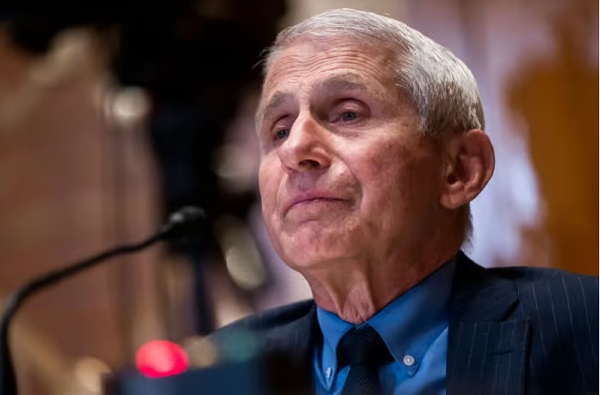
From the Brownstone Institute
By
Anthony Fauci must be furious.
He spent years proudly being the public face of the country’s response to the Covid-19 pandemic. He did, however, flip-flop on almost every major issue, seamlessly managing to shift his guidance based on current political whims and an enormous desire to coerce behavior.
Nowhere was this more obvious than his dictates on masks. If you recall, in February 2020, Fauci infamously stated on 60 Minutes that masks didn’t work. That they didn’t provide the protection people thought they did, there were gaps in the fit, and wearing masks could actually make things worse by encouraging wearers to touch their face.
Just a few months later, he did a 180, then backtracked by making up a post-hoc justification for his initial remarks. Laughably, Fauci said that he recommended against masks to protect supply for healthcare workers, as if hospitals would ever buy cloth masks on Amazon like the general public.
Later in interviews, he guaranteed that cities or states that listened to his advice would fare better than those that didn’t. Masks would limit Covid transmission so effectively, he believed, that it would be immediately obvious which states had mandates and which didn’t. It was obvious, but not in the way he expected.

And now, finally, after years of being proven wrong, the White House has officially and thoroughly rebuked Fauci in every conceivable way.
White House Covid Page Points Out Fauci’s Duplicitous Guidance
A new White House official page points out, in detail, exactly where Fauci and the public health expert class went wrong on Covid.
It starts by laying out the case for the lab-leak origin of the coronavirus, with explanations of how Fauci and his partners misled the public by obscuring information and evidence. How they used the “FOIA lady” to hide emails, used private communications to avoid scrutiny, and downplayed the conduct of EcoHealth Alliance because they helped fund it.
They roast the World Health Organization for caving to China and attempting to broaden its powers in the aftermath of “abject failure.”
“The WHO’s response to the COVID-19 pandemic was an abject failure because it caved to pressure from the Chinese Communist Party and placed China’s political interests ahead of its international duties. Further, the WHO’s newest effort to solve the problems exacerbated by the COVID-19 pandemic — via a “Pandemic Treaty” — may harm the United States,” the site reads.
Social distancing is criticized, correctly pointing out that Fauci testified that there was no scientific data or evidence to support their specific recommendations.
“The ‘6 feet apart’ social distancing recommendation — which shut down schools and small business across the country — was arbitrary and not based on science. During closed door testimony, Dr. Fauci testified that the guidance ‘sort of just appeared.’”
There’s another section demolishing the extended lockdowns that came into effect in blue states like California, Illinois, and New York. Even the initial lockdown, the “15 Days to Slow the Spread,” was a poorly reasoned policy that had no chance of working; extended closures were immensely harmful with no demonstrable benefit.
“Prolonged lockdowns caused immeasurable harm to not only the American economy, but also to the mental and physical health of Americans, with a particularly negative effect on younger citizens. Rather than prioritizing the protection of the most vulnerable populations, federal and state government policies forced millions of Americans to forgo crucial elements of a healthy and financially sound life,” it says.
Then there’s the good stuff: mask mandates. While there’s plenty more detail that could be added, it’s immensely rewarding to see, finally, the truth on an official White House website. Masks don’t work. There’s no evidence supporting mandates, and public health, especially Fauci, flip-flopped without supporting data.
“There was no conclusive evidence that masks effectively protected Americans from COVID-19. Public health officials flipped-flopped on the efficacy of masks without providing Americans scientific data — causing a massive uptick in public distrust.”
This is inarguably true. There were no new studies or data justifying the flip-flop, just wishful thinking and guessing based on results in Asia. It was an inexcusable, world-changing policy that had no basis in evidence, but was treated as equivalent to gospel truth by a willing media and left-wing politicians.
Over time, the CDC and Fauci relied on ridiculous “studies” that were quickly debunked, anecdotes, and ever-shifting goal posts. Wear one cloth mask turned to wear a surgical mask. That turned into “wear two masks,” then wear an N95, then wear two N95s.
All the while ignoring that jurisdictions that tried “high-quality” mask mandates also failed in spectacular fashion.

And that the only high-quality evidence review on masking confirmed no masks worked, even N95s, to prevent Covid transmission, as well as hearing that the CDC knew masks didn’t work anyway.
The website ends with a complete and thorough rebuke of the public health establishment and the Biden administration’s disastrous efforts to censor those who disagreed.
“Public health officials often mislead the American people through conflicting messaging, knee-jerk reactions, and a lack of transparency. Most egregiously, the federal government demonized alternative treatments and disfavored narratives, such as the lab-leak theory, in a shameful effort to coerce and control the American people’s health decisions.
When those efforts failed, the Biden Administration resorted to ‘outright censorship—coercing and colluding with the world’s largest social media companies to censor all COVID-19-related dissent.’”
About time these truths are acknowledged in a public, authoritative manner. Masks don’t work. Lockdowns don’t work. Fauci lied and helped cover up damning evidence.
If only this website had been available years ago.
Though, of course, knowing the media’s political beliefs, they’d have ignored it then, too.
Republished from the author’s Substack
-
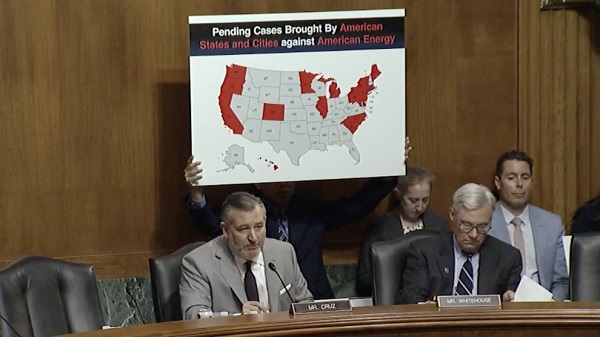
 Energy1 day ago
Energy1 day agoChina undermining American energy independence, report says
-

 Brownstone Institute2 days ago
Brownstone Institute2 days agoFDA Exposed: Hundreds of Drugs Approved without Proof They Work
-
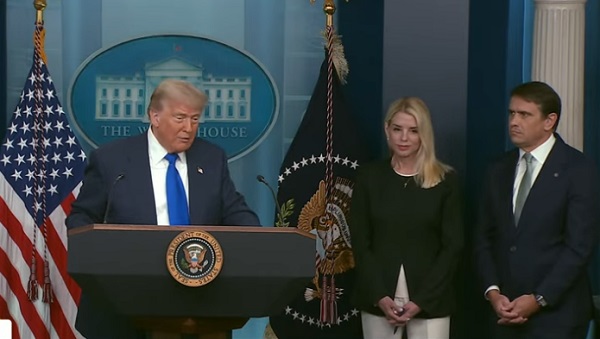
 Business1 day ago
Business1 day agoTrump on Canada tariff deadline: ‘We can do whatever we want’
-

 Automotive1 day ago
Automotive1 day agoElectric vehicle sales are falling hard in BC, and it is time to recognize reality.
-

 Business1 day ago
Business1 day agoEurope backs off greenwashing rules — Canada should take note
-
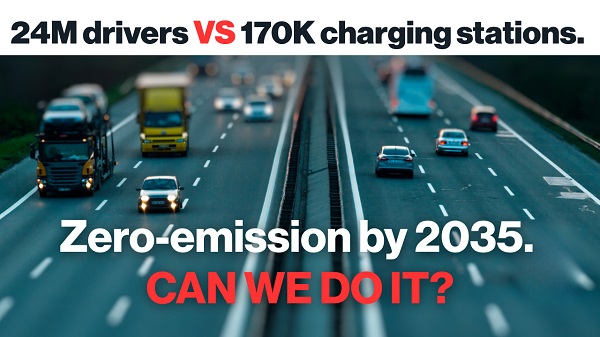
 Automotive1 day ago
Automotive1 day agoPower Struggle: Electric vehicles and reality
-
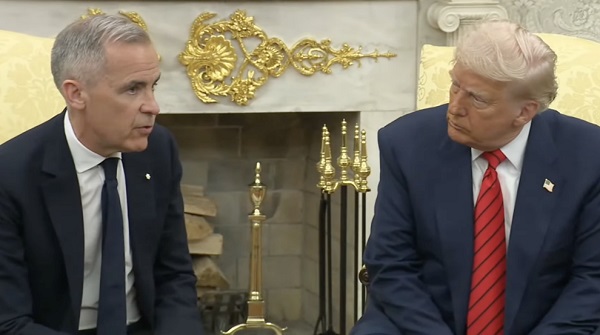
 Business7 hours ago
Business7 hours agoCanada Caves: Carney ditches digital services tax after criticism from Trump
-

 Crime7 hours ago
Crime7 hours agoSuspected ambush leaves two firefighters dead in Idaho




